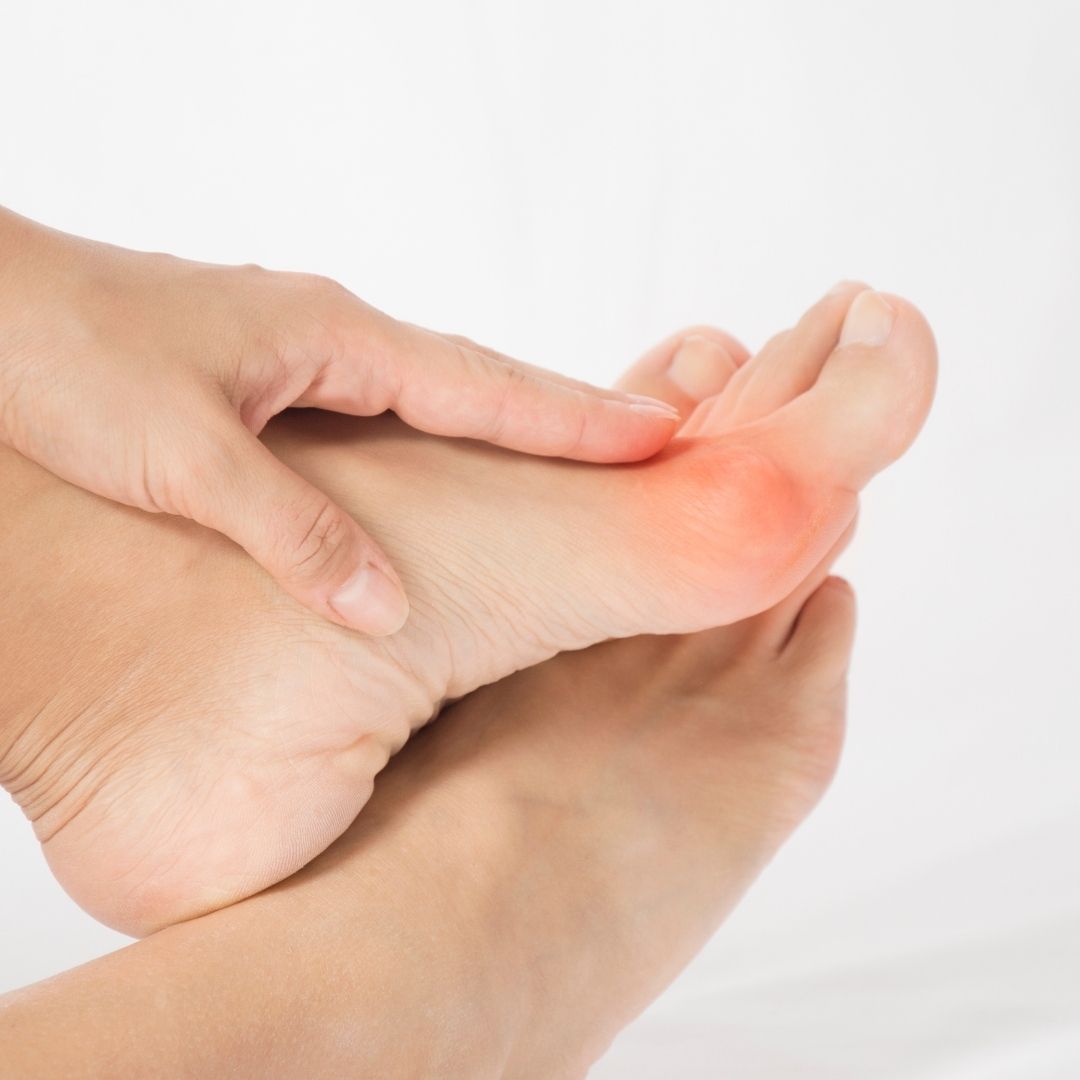Bunions

Bunions
Foot deformities are a very frequent reason for medical consultation in our society, and the queen of deformities is the Bunion, scientifically called Hallux valgus.
In a rough way, to make it compressible to the less knowledgeable, we could say that a Bunion is the appearance of a lump in the medial part of the forefoot combined with the deviation of the first finger towards the rest of them, pushing them and deforming them themselves.
But what exactly is a Bunion?
There is a popular belief that it is the bone itself that grows and creates the deformity; and this is the first myth to be demystified. The deformity is produced because the bone called the first metatarsal (a bone that goes from the midfoot to the base of the first finger) deflects angularly as if it were the handle of a clock. When this deviation occurs, the tendons that reach the tip of the first finger pull it as if they were a string of an arch and deflect the finger in the direction of the others, pushing them.
Why are there people who suffer pain and others instead do not suffer any discomfort?
The answer to this question is full of nuances. We start from the premise that the Bunion as an established deformity does not hurt. Pain is caused by the activation of nociceptive receptors, that is, when the nerves that send pain information to the brain for some external cause are activated. While the Bunion is growing all the tissues that are around the deformity are tense because the bone that is deviating pushes them. This produces inflammation and it is this inflammation that sends the information to the brain as pain. Another situation occurs when the footwear laterally compresses the forefoot. Due to the widening of the foot when there is a Bunion, the footwear can tighten enough to irritate the tissues around the deformity and likewise send this information to the brain as pain.
That is why in patients who had suffered pain for long periods of time, in many cases this pain ends up disappearing when the deformity stops increasing and comfortable footwear is worn.
Am I to blame for having bunion? Is the footwear I've worn for years the cause of the problem?
The answer is No. Our habits can accentuate the symptoms, that is, that we notice more pain, but they are never a single trigger cause. It is said that the origin of the pathology is multifactorial and it is our genetic condition along with environmental conditions (activity, footwear) and chance that leads to its appearance or not. Yes it has been shown that the elasticity of the tissues can favor their appearance and that is why the deformity is much more frequent in the female sex since women usually have more elastic tissues in the body.
I have bunion. Should I have surgery? Better to do it now before it goes any further or it's too late?
The first thing to understand is that the Bunion is a mechanical problem. It is not a malignant disease and therefore its surgical repair will never be required. The second concept to keep in mind is that the reason for indicating surgical intervention should be pain or the presence of deformities so considerable that they do not allow the foot to be inserted into the footwear or that it produces wounds on the skin. If these conditions occur, surgery can be considered and the patient should ask the traumatologist the details and implications of the process in order to make the decision.
However, it is important to note that the time to make the intervention is when the problems arise. It is not advisable to do it just to prevent the deformity from going any further as you never know if it will advance or not. In addition, age is not a limitation since the results of surgery do not worsen the older the patient.
Do braces work to correct Juante?
There are orthopaedic separators and contraptions for the correction of the deformity but it is scientifically proven that they do not prevent the deformities from going any further or correct what has already been deformed; simply while wearing them they keep their finger in that position and although sometimes they can relieve pain, they are often uncomfortable.
Everyone tells me it's a painful surgery, is it?
Another point to demystify is that Bunion surgery is a painful surgery. It's not. Medicine advances and surgical techniques and pain control have undergone a great development in recent decades. Outpatient surgery without admission is the norm nowadays and it is not uncommon for the patient to explain that he has not required to take analgesic medication during the postoperative period or that the consumption of this has been very low. In addition, nowadays it is allowed to support the foot from the first moment, although it is recommended to rest and have the foot elevated to improve circulation and facilitate healing. It is from the first month when most patients begin to put on their usual shoes again and gradually return to their daily lives.
To conclude this reflection on the Bunion I would just add one last comment. In order to plan a surgery the patient must be convinced of it. Confirmation to operate should be made when there are no doubts, when the patient is determined and confident in the treatment. It is in these circumstances that the best results are achieved.



